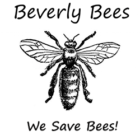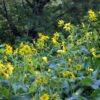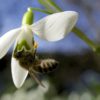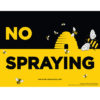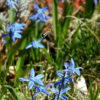Crocus: Early Spring Forage For Bees
by Anita Deeley at BeverlyBees.com
A low maintenance bulbous perennial, Crocuses are one of the first Pollen sources available to bees in early to mid spring.
Blooms: March/April Bee Forage: Pollen Pollen Color: Orange Yellow
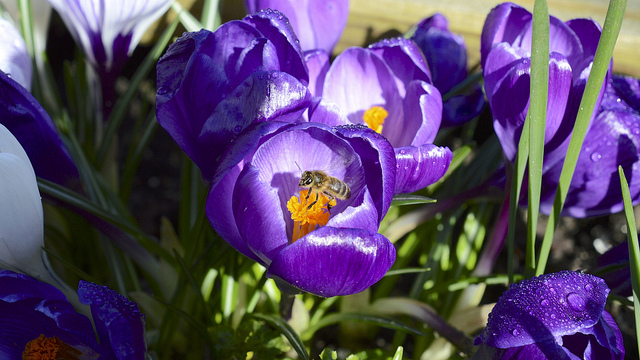
Spring blooming crocuses emerge in the late winter and early spring, weeks before other flowers are brave enough to show their pretty faces. Their hardy shoots can even be seen poking their heads through the snow and ice, beckoning spring to arrive quickly. Spring crocuses come in a variety of colors and bloom well into March and even April here in Massachusetts. They will grow easily in planting zones 3-8. For spring flowers, crocus bulbs must be planted in the fall. Once they are established, crocuses are easy to care for and will naturalize, coming back year after year.
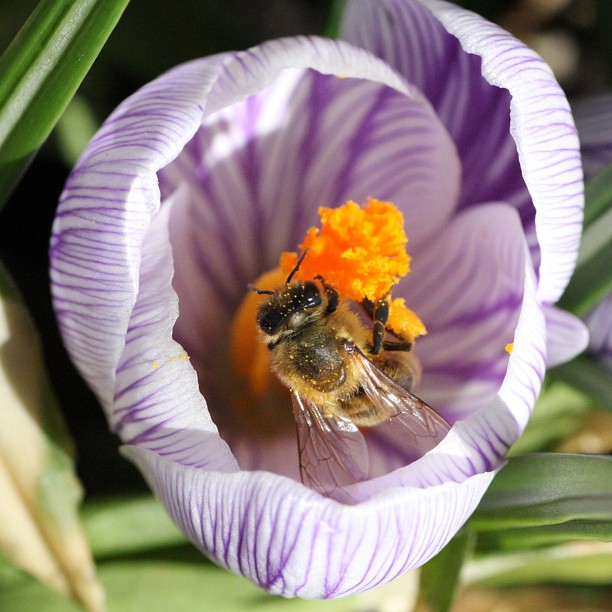
Crocuses are in the Iris family, Iridaceae, sub family Crocoideae, and the genus Crocus. They come in many varieties delighting your landscape with color. Some crocus will even bloom in the fall, but it’s the spring blooming crocus that the bees really enjoy! The flower’s enticing aroma attracts bees and native pollinators alike.
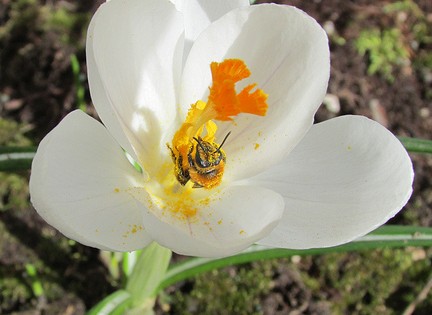
Spring blooming crocuses provide one of the first pollen sources of the year in many locations at a time when not much food is available for bees to gather. Honey bees in these locations are recovering from a long winter and are actively increasing their colony’s population so they can gather enough honey for the season ahead. They need fresh pollen at this time, as the stores in their hive are running low. Honey bees mix the fresh pollen with honey, turning it into bee bread, which they feed their developing brood.
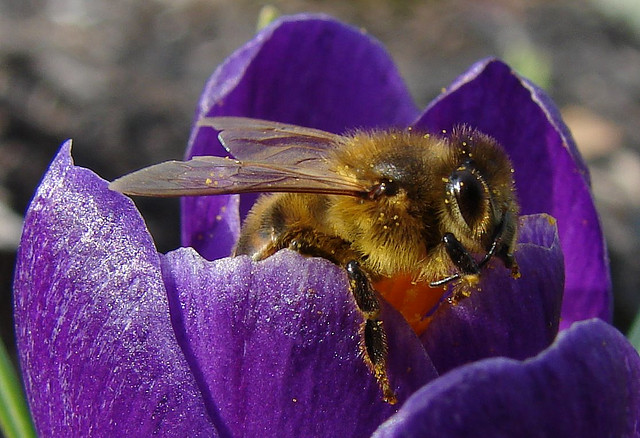
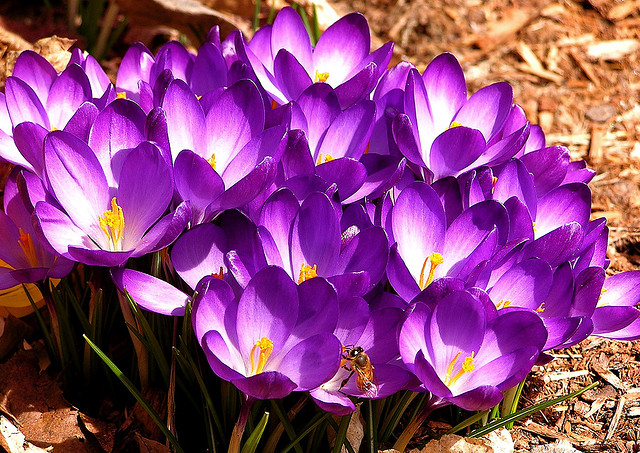
To find more foraging plants for bees, please see Planting a Bee Friendly Garden.
Other Posts You May Enjoy:
- Snowdrops: Winter Forage For Bees
- Blue Pollen, Honeybees and Siberian Squill
- Planting a Bee Friendly Garden
- Snowdrops for Bees
Feature image photo by photogirl7.1 via creative commons license.
